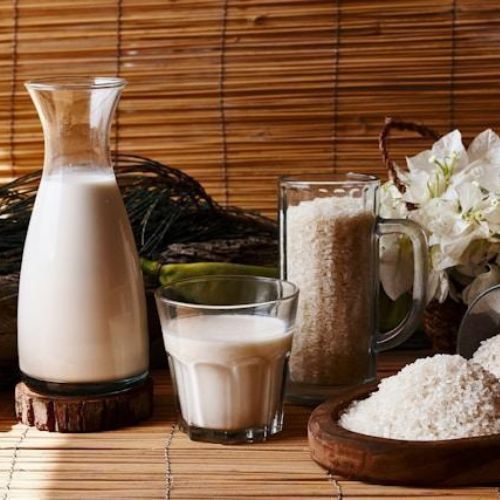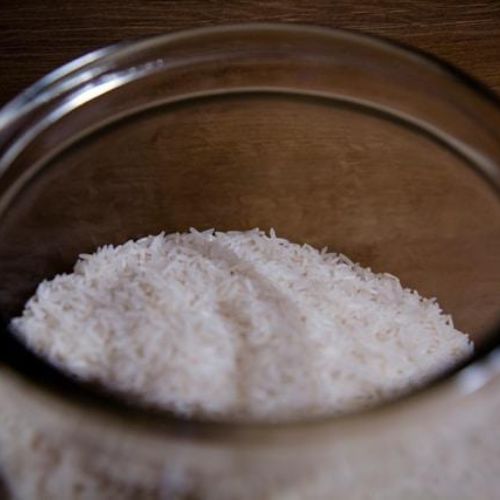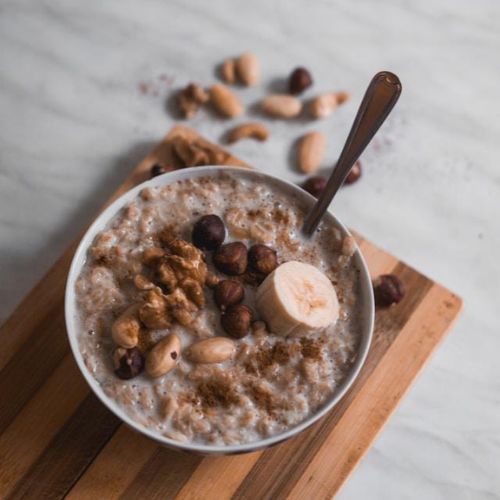When it comes to the perfect dairy alternative, rice milk has long been a staple on the shelves. But, before you reach for that carton, let’s take a closer look at why rice milk might not be the golden ticket to vegan bliss that you thought it was.
#1. Potential Arsenic Concerns

Here’s a sobering thought – rice milk has been found to contain higher levels of arsenic than other dairy alternatives. Arsenic is a naturally occurring element found in soil and water.
Due to its growing condition, rice absorbs more arsenic than other grains. The levels of arsenic in rice milk are generally considered safe. But, it’s still something to be mindful of, especially if you consume rice products regularly.
Pay particular attention to milk made from rice sourced in regions with high arsenic levels in soil or water. Chronic exposure to arsenic has been linked to various health issues, including cancer and cardiovascular disease.
#2.Potential for Cross-Contamination & Toxic Poisoning

Rice milk may be cross-contaminated in processing plants and at home, possessing risks of food poisoning. From farming fields to processing plants, grains, such as rice, are highly susceptible to contamination.
At home, factors, such as inadequate heating or rice reheating pose the risk of microbial (Bacillus cereus) toxin poisoning. Additionally, individuals with allergies or sensitivities to other grains, such as wheat or barley, should be aware of the potential for cross-contamination in rice milk production facilities.
Manufacturers may produce multiple types of plant-based milk using shared equipment, increasing the risk of allergen cross-contact. If you have allergies or intolerances, always check product labels carefully. Plus, choose rice milk brands with dedicated allergen-free facilities.
#3. Concerns About Processing Methods

Allergen-rich facilities aren’t the only concern when it comes to rice milk production. The actual rice milk production process may come with risks, too! The rice processing methods may incorporate stabilisers, additives, or other ingredients that some individuals prefer to avoid.
Commercially available rice milk is usually fortified with calcium and vitamin D. While these nutrients benefit the drinker, additives must accompany the fortification to boost consistency and shelf stability.
To counter the unpopular rice milk flavour, manufacturers also incorporate flavour enhancers, such as whole grain rice syrup. Manufacturers of various plant-based milks, such as rice, oat and soy milk, homogenise and thermally treat these milks to achieve a consumer-friendly appearance and texture.
Unfortunately, this process may give rise to antinutrients, like phytic acid, which inhibit some digestive enzyme actions (although they come with benefits like anti-cancer properties).
If you’re concerned about the presence of additives or processing methods used in rice milk production, opt for homemade or organic varieties.
#4. Environmental Impact and Sustainability Concerns

Let’s talk about the environmental impact of rice milk production. Rice cultivation can be resource-intensive, requiring large amounts of water and contributing to greenhouse gas emissions.
Additionally, the processing of rice into milk can involve additional energy and water usage. For those concerned about sustainability and environmental conservation, exploring alternatives with a lower environmental footprint might be worth considering.
Suggested read: 24 Expensive Vegan Ingredients That Are Worth The Splurge
#5. Rice Milk Curdles in Coffee and Tea

For some people, rice milk is best used for baking, adding to oatmeal, or smoothies. However, it may not be the best accompaniment for tea or coffee. This is because its texture causes it to curdle easily.
Oat milk emerges as the contender among plant-based milk for tea and coffee. Experimenting with different plant-based milks can help you find one that suits your taste preferences.
#6. High in Carbs, Low in Protein

Rice milk may be light and refreshing, but did you know it’s also high in carbohydrates and low in protein? Rice milk contains a mere 1g of protein and 23 g of carbohydrates for every serving. That’s right — while it might satisfy your thirst, it’s not exactly packing the nutritional punch you need to power through your day.
If you’re looking for a dairy alternative that’s more balanced and satisfying, you might want to consider other options like soy milk (7g of protein and 4g of carbohydrates) or hemp milk (4.7g of protein and 1.3g of carbohydrates).
#7. Glycemic Impact

Rice milk has a relatively high glycemic index (GI), meaning it can cause a rapid increase in blood sugar levels after consumption. Other dairy alternatives with a lower GI may be better if you are a diabetic or trying to manage blood sugar levels. These include hemp milk, almond milk or unsweetened soy milk.
#8. Caloric Content

Compared to other dairy alternatives like almond milk or coconut milk, rice milk tends to be higher in calories (about 47 calories for every 100ml). The caloric content is particularly higher for sweetened or flavoured options (an average of 60 calories per 100ml).
If you’re watching your calorie intake or trying to maintain a healthy weight, choose lower-calorie alternatives per serving. Almond milk (13 calories) and soy milk (33 calories) are the best alternatives in this case.
#9. Limited Nutritional Benefits

When it comes to vitamins and minerals, rice milk falls short compared to other dairy alternatives. Rice milk may be fortified with calcium and vitamin D. But, it lacks the naturally occurring nutrients, such as B vitamin, iron, and phosphorus, found in oat, hemp, or almond milk.
Further, rice milk contains lower levels of omega-3 fatty acids, vitamin B12 and iodine, which are important for overall health. To maintain optimal health on a plant-based diet, choose a dairy alternative, such as oat or hemp milk, with a more potent nutritional profile.
Opting for dairy alternatives that offer a more comprehensive nutrient profile can help ensure you meet your nutritional needs.
#10. Potential Allergies and Sensitivities

Rice poses the least risk of causing allergies, explaining why it’s a favourite among people with lactose intolerance and other allergies. However, few people may suffer from rice-related allergies.
Individuals with rice allergies or sensitivities should avoid rice milk and products containing rice derivatives. Consuming rice milk can trigger allergic reactions such as skin rashes, digestive issues, or respiratory problems in susceptible individuals.
#11. Rice Milk Tastes Weird

Lastly, some people may simply prefer the taste and texture of other dairy alternatives over rice milk. Rice milk has a naturally sweet and mild flavour, which may not appeal to everyone’s palate.
Rice Milk: Yay or Nay?
While rice milk certainly has its merits, it’s essential to weigh the pros and cons. Consider your nutritional needs, health goals and environmental values. In addition to being lactose-free, rice milk has a lower allergy-triggering potential than dairy milk.
Its low phosphorus and potassium content is also great for people with chronic kidney disease. Don’t forget its incredible texture and taste – ideal for baking and other fun culinary explorations. But, you can find even better plant-based alternatives that circumvent the cons of rice milk!

been trying rice milk in my coffee and noticed it curdles. anyone knows why this happens? thought it was a healthier choice but this puts me off a bit.
It’s often due to the acidity of your coffee reacting with the rice milk. Try adding the milk first then the coffee slowly to prevent curdling.
maybe it’s the universe’s way of telling you to stick to regular milk, mate.
I’m not surprised about the environmental impacts and sustainability concerns of rice milk. It seems like every ‘good’ alternative has its drawbacks.
Arsenic in rice milk sounds alarming, but how does that compare to the levels found in water and other foods? Context matters before we jump to conclusions.
so rice milk is high in carbs but low in protein? not great for post-workout then. gotta find better options for my shakes.